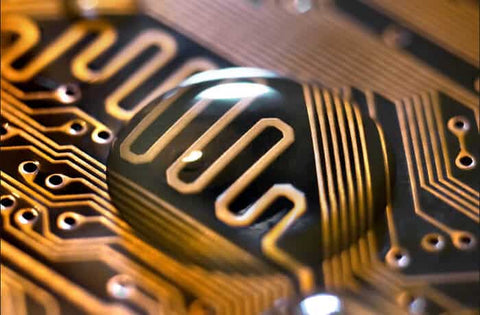What is impedance control PCB?
Impedance Control PCB is the characteristic impedance of a transmission line formed by PCB conductors. It is relevant when high-frequency signals propagate on the PCB transmission lines. PCB Impedance Control is important for signal integrity: it is the propagation of signals without distortion.

Characteristics of Impedance in PCBs
A PCB trace impedance comes with several features to look into concerning impedance. The features of a 50 ohm PCB trace PCB board design impedance include: dielectric constant, length, width, height, PCB fabrication limits/tolerances, and the distance between the track & other copper features.
These are the characteristics to look into when manufacturing impedance control PCBs and when calculating it.
Why Is Impedance Control PCB Necessary?
Recently, we’ve seen a continuous rise in device switching speeds. Generally, these devices have suddenly become complicated and faster. For instance, signal integrity issues have now become very repetitive with an increase in the operational speeds of devices. This means that the devices of today must be able to solve any SI issues.
Therefore, you cannot keep treating PCB traces as point-to-point connections. Rather, begin to consider them as transmission lines. Also, you must understand the importance and necessity of impedance matching in getting rid of or reducing the effect on SI. Know that, by working with good design approaches and practice, you can easily prevent possible SI issues. In this case, controlled impedance can assist you in mitigating or averting SI issues.
Other reasons why you need impedance control PCB includes
More Signal Power Required
PCB trace functions to transfer a driver device’s signal power to a device that will receive it. Here, power has to be transmitted all through the trace’s length. However, maximum signal power can only be achieved with the PCB’s matching impedances.
This is one reason why an impedance control PCB is needed. This type features an impedance matching, which permits enough power from the driver of the device and ends at the receiver.
Improved Performance
If you are searching for a PCB, which ensures quality device performance, then you should choose impedance control PCB.
One reason why the majority of devices fail when it comes to integrity and signal power is as a result of poor PCB layout and design. The layout stage during the manufacturing of PCB is usually a very critical one. If one is not careful, there’s a high chance that there will be a degradation of high-speed signals as they propagate to the receiver.
Devices that are controlled by impedance control PCB usually utilize less energy and perform faster. This PCB type allows devices to function better for long, thereby improving their control reliability and value.
Control flow of Energy
It’s true that impedance control PCB makes use of less energy. However, if you also need to control the flow of energy in your projects, then one great choice is impedance control PCB. The fact is, controlled impedance is important when transitioning from lower to higher ohm environments where there is impedance.
Why is this so? These transitions could result in reflection of energy to look like powerful and strong pulses. These pulses can disrupt the flow of energy. Therefore if your application deals with digital devices that work with high power, like those of RF applications, then it becomes necessary to use impedance control PCB.
Managing Electromagnetic Interference
If you use impedance control PCB, then you don’t have to worry about circuit disruptions, as a result of electromagnetic interference.
Concerning the PCB world, a pulse of reflection energy can disrupt circuits completely. This disruption usually extends to neighboring components. Also, there is a strong potential to interrupt the flow of energy and cause product operation failure.
